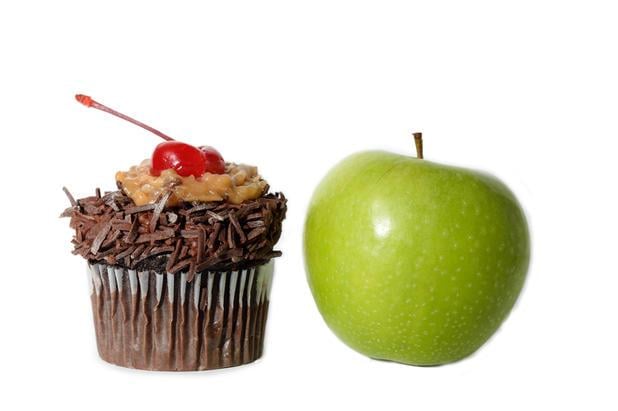What Do Your Food Cravings Mean?

Food cravings – we all get them. But did you ever wonder why some people crave salty, crunchy snacks like potato chips, while others want high-carb side dishes such as mashed potatoes or sugary treats like chocolate? What you crave, when you crave it and how often you crave it says something about your health.
Understanding the underlying reason for your cravings can help you get them under control. You can start by figuring out what type of craving you’re feeling. Marc David of the Institute for the Psychology of Eating says there are three categories of cravings–supportive, dispersive and associative.
Supportive Cravings
Supportive cravings are driven by instinct. They’re your body’s response to needing specific foods to help you recover from an illness or nutritional deficiency. You may have noticed a yearning for citrus fruits while recovering from a cold or a hankering for steak if you’re struggling with anemia. Severe anemia also can trigger pica--cravings to chew ice cubes or eat dirt and paper. (If you are experiencing pica, speak to your doctor as soon as possible.)
Eating the same foods every day increases your likelihood of developing supportive cravings. Many people fall into an eating routine because it makes it easy to keep track calories and nutrients. However, narrow eating routines can limit your intake of certain nutrients, which can trigger your body to crave them. For example, if you crave:
- Salty foods like potato chips, nachos or French fries, it may indicate a high level of cortisol (stress hormone). To help manage your cortisol levels, eat high quality protein such as eggs and lean meat, and complex carbohydrates like brown rice, beans and vegetables. If your doctor approves, adding a couple of yoga classes to your weekly schedule also might help.
- Sweet foods like candy bars, it can mean your blood sugar is low. Low blood sugar can be the result of dieting or eating too many highly processed foods that cause your blood sugar to spike and then crash. Combine protein with a complex carbohydrate at snacks and meals. Examples include berries with yogurt, peanut butter on whole grain bread and milk with cereal. Cravings for sweet foods brought on by low blood sugar may also be a sign of something more serious. You should talk to your doctor about this craving.
- Chocolate, it may suggest a possible magnesium deficiency. Getting more seeds (pumpkin, sunflower and sesame), beans (navy and black) and spinach into your diet can help raise your magnesium levels and may help ease chocolate cravings.
- High-fat dairy foods like butter, ice cream or cheese, it might be related to a calcium deficiency. For a lower calorie approach to getting in your calcium, snack on walnuts and eat several servings of green leafy vegetables and salmon each week.
Dispersive Cravings
Dispersive cravings are more or less the opposite of supportive cravings--it’s when you want unhealthy junk food that will drain your energy level. These types of cravings often stem from highly emotional situations that increase your energy or stress levels. To counteract this response, your body will crave comfort foods, which are generally laden with sugar and fat. During stressful circumstances, you may be able to control stress and emotional eating by drinking black tea to lower cortisol levels, listening to calming music, chewing gum or meditating.
Associative Cravings
Associative cravings are driven by memories and nostalgia. Many people have deep meaningful associations with food, which is why your want old family dishes around the holidays, favorite desserts after an accomplishment or comfort foods when you’re sick.
Researchers from Virginia Commonwealth University found that smelling foods you associate with memories–like apple pie, spaghetti sauce or cotton candy--can also elicit cravings. They think memory and pleasure-seeking areas of your brain (hippocampus, insula and caudate) are involved.
Studies have linked enjoyable activities with the release of dopamine, a chemical messenger that helps control the brain’s reward and pleasure centers. Experts believe the same process occurs when you eat foods that are tied to fond memories or feelings of happiness.
If you’re trying to prevent weight gain from family dinners and holiday parties, work on controlling your associated cravings by strengthening your willpower. Social psychologist Dr. Roy Baumeister says willpower can be strengthened like a muscle through exercises. For example, working on a puzzle that is tough to solve, watching a funny movie while resisting the urge to laugh or watching a sad movie while resisting the urge to cry.
If you’re battling cravings, work with your MDVIP-affiliated doctor. As part of the MDVIP Wellness Program, your doctor can customize a wellness plan for you and your needs, including helping identify the underlying causes of your cravings. Don’t have an MDVIP-affiliated doctor? MDVIP has a nationwide network of physicians. Find one near you and begin your partnership in health.


